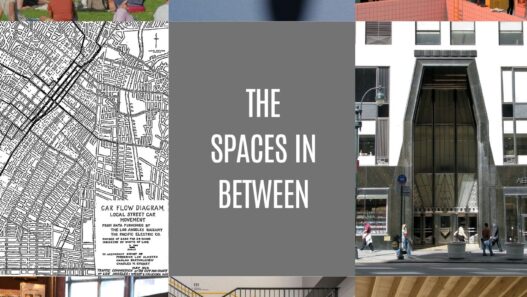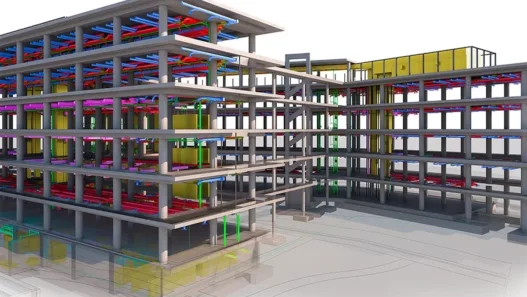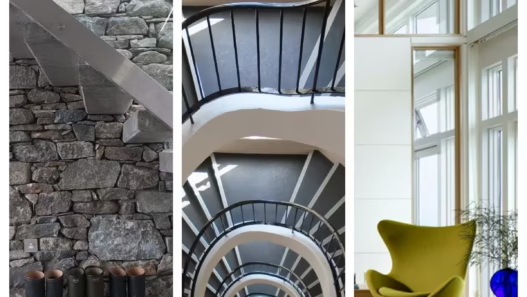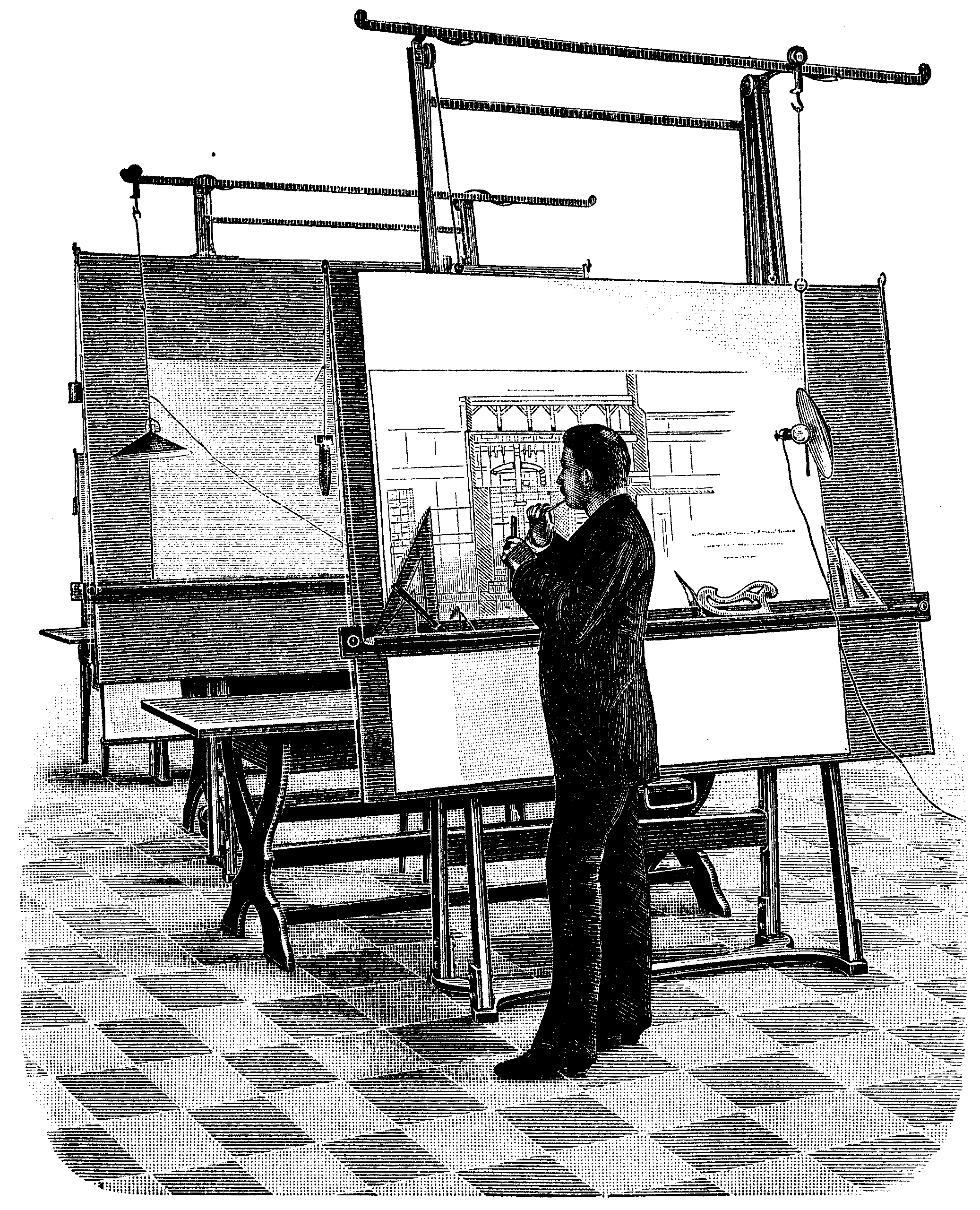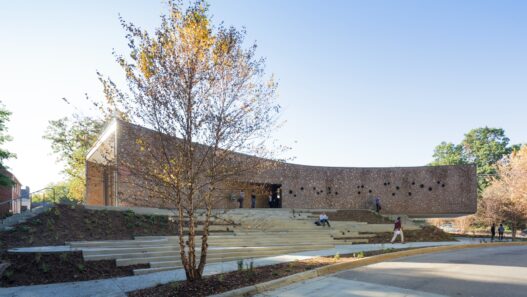Considered one of the most remarkable engineering feats of the modern world, the Akashi Kaikyo Bridge connects the city of Kobe on the Japanese mainland with Awaji Island. Crossing the Akashi Strait, this suspension bridge stands as a symbol of durability and innovation.
- Location: Akashi Kaikyo Bridge connects the city of Kobe on Honshu Island to Awaji Island in Japan.
- Year of Completion: The bridge was completed in 1995.
- Length: With a total length of approximately 3,911 meters (12,831 feet), it is the longest suspension bridge in the world.
- Main Span: The main span measures 1,991 meters (6,532 feet), making it the longest central span of any suspension bridge.
- Design: The bridge was designed by the architectural firm P. D. P.
- Construction Challenges: The bridge faced significant challenges during construction, including severe earthquakes and typhoons that delayed its completion.
- Traffic Capacity: The bridge has six lanes for vehicular traffic and a pedestrian crossing with a daily capacity of 100,000 vehicles.
- Innovation: The Akashi Kaikyo Bridge incorporates advanced engineering techniques, including seismic isolation to withstand earthquakes.
- Cultural Significance: It is considered a symbol of Japanese engineering skill and resilience and represents the country’s commitment to infrastructure development.
- Tourist Attraction: The bridge is a popular tourist attraction, offering observation points with spectacular views of the surrounding sea and landscape.
The story of its construction is as fascinating as its architectural design and is a point of interest for engineers, architects and travelers.

Bridge Overview
The Akashi Kaikyo Bridge, known as “Akashi Kaikyō Ōhashi” in Japanese, has an elegant and awe-inspiring design. Completed in 1995, it is the longest suspension bridge in the world with a length of approximately 3,000 meters. The bridge features two massive towers that rise meters above the water and are connected by thick cables that support the bridge deck. Its sleek, streamlined shape reflects advanced engineering principles, allowing it to withstand strong winds and seismic activity.
Crossing the bridge offers stunning views of the surrounding waters and landscapes, while the strait is frequently crowded with ships. The bridge has become an iconic landmark that attracts visitors from around the world who want to experience its splendor first-hand.
Historical Significance
The Akashi Kaikyo Bridge has a rich historical narrative, stemming from the need for a solid transportation route following a tragic event. The idea for the bridge originated following a ferry disaster in 1955 when a ferry collided with a freighter, killing many people. This incident underlined the need for a more reliable transportation link between the islands and the mainland.
Construction began in 1986, but the project faced significant challenges, including the Great Hanshin Earthquake, which caused significant delays and required a comprehensive re-evaluation of the design to ensure safety and resilience against future seismic activity. The historical context of the bridge symbolizes Japan’s determination to overcome challenges through innovation and engineering ingenuity.
Purpose and Functionality
The primary purpose of the Akashi Kaikyo Bridge is to significantly reduce travel time between the Kansai region and Shikoku Island by facilitating road traffic. Before the bridge, this journey involved long ferry rides that could be interrupted by weather conditions. With the bridge in service, vehicles can cross in around a few minutes, increasing trade and mobility and changing the economic landscape.
The bridge also plays an important role in emergency response, providing rapid evacuation and transportation during natural disasters. Its design accommodates six lanes of heavy traffic with thousands of vehicles per day. Beyond its functionality, the bridge is a vital link that also connects people and communities, promoting cultural exchange and tourism.
Key Statistics and Facts
The Akashi Kaikyo Bridge is a marvel of modern engineering and boasts impressive statistics that underline its importance. At 1,000 meters, the bridge holds the title of having the longest center span of any suspension bridge in the world. The bridge’s total length of 3,meters includes approaches on both sides, increasing its accessibility.
Constructed from high-strength steel and concrete, the bridge is designed to withstand winds of kilometers per hour and seismic forces equivalent to a major earthquake. These remarkable features showcase the engineering innovations used in its design and ensure it is a safe gateway in an area prone to natural disasters.
Visual Impact on the Landscape
The Akashi Kaikyo Bridge is a visually breathtaking part of the Japanese landscape. Its graceful lines and towering structures rise majestically against the backdrop of the Akashi Gorge, creating a striking silhouette that is particularly mesmerizing at sunset. The design of the bridge is in harmony with the surrounding environment, enhancing rather than detracting from the natural beauty of the area.
Visitors can appreciate the splendor of the bridge and the interplay of light and shadow on its surface from various vantage points, including nearby parks and observation decks. The bridge has also become a popular subject for photographers and artists, symbolizing the beauty of human creativity in the face of nature. It is becoming an icon that resonates with locals and tourists alike, a testament to what can be achieved when innovation meets determination.
Design and Engineering
Design and engineering are the twin pillars that hold up the world of architecture. They work hand in hand to create functional and safe structures. Understanding the nuances of design and engineering is crucial for anyone interested in the built environment, as these elements determine how buildings interact with their surroundings and the people who live in them.
Architectural Vision
The architectural vision is the creative plan that guides the creation of a building. It encompasses the purpose, context and experience of the space. A good architectural vision reflects a deep understanding of place, culture and the needs of users. For example, the Sydney Opera House, with its iconic sail-like design, has a vision that harmonizes with its waterfront location while serving as a cultural center for the city.
This vision often begins with a concept that explores the relationship between form and function. Architects must think about how spaces will be used, how they will look and how they will fit into their surroundings. The best architectural visions are those that stir emotions and provoke thought, transforming the ordinary into the extraordinary.
A successful architectural vision also anticipates the future. It considers how a building will evolve over time and adapt to changing societal needs. This foresight is crucial as buildings are long-lasting investments that must serve multiple generations.
Engineering Innovations
Engineering innovations play a crucial role in turning architectural visions into reality. Advances in technology and materials have revolutionized construction practices, enabling more complex and ambitious designs. For example, the use of computer-aided design (CAD) and Building Information Modeling (BIM) has streamlined the design process, enabling architects and engineers to collaborate more effectively.
A notable example of engineering innovation is the use of high-performance concrete and steel, enabling taller and more durable structures. The Burj Khalifa in Dubai, currently the tallest building in the world, demonstrates how these materials can be used to achieve unprecedented heights while ensuring safety and stability.
There is also interest in innovative construction techniques such as prefabrication. Prefabricated components are built off-site and then assembled on-site, significantly reducing construction time and minimizing waste. This method allows for greater precision in building assembly.
Materials Used in Construction
The choice of materials is essential in architecture and engineering. Materials also affect durability, energy efficiency and environmental impact. Traditional materials such as wood and brick still hold their value, but modern architecture often uses materials such as glass, steel and concrete to achieve stylish and contemporary designs.
For example, the use of glass in buildings allows natural light to flood the interiors, creating a warm and inviting atmosphere. Apple Park in Cupertino, California, features large glass panels that blend the indoor environment with the surrounding landscape, promoting a sense of openness and connection to nature.
Sustainable materials are also becoming increasingly important. Recycled materials, bamboo and rammed earth are becoming popular choices for environmentally conscious architects. These materials not only reduce the ecological footprint of buildings, but also contribute to the overall health and well-being of building occupants.
Challenges During Construction
Construction is a complex process full of challenges. From unexpected site conditions to budget overruns and regulatory hurdles, architects and engineers have to deal with a myriad of issues to bring a project to life. Weather can also be a major factor; rain, snow or extreme temperatures can affect timelines and safety.
Coordination between various stakeholders such as architects, engineers, contractors and clients is essential. Miscommunication can lead to costly mistakes and delays. For example, if an engineer’s specifications are not clearly understood by the construction team, this can lead to structural weaknesses or compromised aesthetics.
Furthermore, urban environments present unique challenges, such as limited space and the need to integrate new structures into existing neighborhoods. The High Line in New York is a prime example of overcoming these challenges. Transforming a former railway line into a vibrant public space, this elevated park required meticulous planning and collaboration between various stakeholders.
Sustainability Assessments
Sustainability in architecture and engineering is no longer optional; it is a necessity. As concerns about climate change and resource depletion grow, the industry is increasingly focused on creating buildings that minimize environmental impact. Sustainable design principles advocate energy efficiency, waste reduction and the use of renewable resources.
Passive design strategies, such as maximizing natural light and ventilation, are essential in reducing a building’s energy consumption. Bosco Verticale in Milan, Italy, is a striking example of sustainability in architecture. This pair of residential towers features thousands of trees and plants that provide insulation and reduce the urban heat island effect.
Furthermore, the integration of renewable energy sources such as solar panels and green roofs is becoming standard practice. These features help buildings generate their own energy and contribute to a healthier urban ecosystem by promoting biodiversity.
Ultimately, design and engineering are an integral part of the architectural landscape and shape the way we build and live our spaces. By understanding architectural vision, engineering innovations, material choices, construction challenges and sustainability considerations, we can appreciate the complexity of creating structures that improve our lives while respecting the environment. Through thoughtful collaboration and creativity, the future of architecture holds enormous potential for innovation and positive impact.
Construction Journey
The construction journey is a fascinating narrative, from the initial idea to the final structure. It encompasses the countless processes, decisions and innovations that shape the built environment around us. This journey also reveals how buildings respond to societal needs and environmental challenges.
Construction Timeline
A construction timeline is like a roadmap showing the stages a project goes through. It usually starts with the conception of an idea inspired by a need or vision for a new space. This phase is crucial as it lays the foundation for everything that follows. Next comes the design phase, where architects draw initial concepts and collaborate with clients to develop the vision.
Once the designs are approved, the project moves into the pre-construction phase. This involves obtaining permits, conducting site surveys and preparing budgets. Actual construction begins with site preparation, which usually involves demolishing existing structures and clearing the land. As work progresses, there are several key phases, including foundation work, framing, installation of utilities and finally the finishing touches.
Each of these phases is typically broken down into a timeline, which helps coordinate efforts and ensures that the project remains on schedule. Delays can occur due to various factors such as weather conditions or supply chain issues, making flexibility essential. This timeline improves communication between all parties involved, ensuring that the construction journey is as smooth as possible.
Key Architects and Engineers
The construction journey is deeply influenced by the vision and expertise of key architects and engineers. Often seen as the creative force behind a project, architects bring artistic vision and functionality to their designs. Their role goes beyond aesthetics; they consider how the building will serve its purpose and fit into the surrounding environment.
Engineers focus on the technical aspects of construction. They ensure that designs are structurally sound and safe. The collaboration between these two professions is vital. Renowned architects such as Frank Lloyd Wright with his organic designs and Zaha Hadid, known for her futuristic and fluid forms, have pushed the boundaries of what is possible in architecture. Meanwhile, engineers like Gustave Eiffel and today’s innovators have ensured that these artistic visions can be realized without compromising safety.
The synergy between architects and engineers is often highlighted in iconic projects where their collective expertise results in structures that are both breathtaking and enduring. This collaboration shapes the construction journey, making it a rich tapestry of creativity and precision.
Techniques and Technologies Used
In the construction journey, techniques and technologies play an important role in determining how structures are built. Over the years, advances in materials and methods have transformed the industry. Traditional techniques such as bricklaying and timber framing have evolved with the incorporation of modern materials such as steel and reinforced concrete, allowing for taller, more durable structures.
One of the most significant developments in recent years is the use of Building Information Modeling (BIM). This technology enables architects and engineers to create detailed digital representations of a project, allowing for better planning, coordination and visualization. It reduces errors and streamlines the construction process by improving collaboration between team members.
In addition, sustainable building practices have become increasingly important. Techniques such as passive solar design, green roofing and the use of environmentally friendly materials are now commonplace, reflecting a commitment to environmental stewardship. These innovations contribute to a healthier planet.
Important Milestones
The construction journey is marked by important milestones that signify progress and success. Each milestone represents a critical point in the project and is usually celebrated by the team involved. These milestones include the completion of the foundation, the raising of the first beam and the topping out ceremony when the highest point of the structure is reached.
These moments foster team spirit and create a shared sense of purpose. Celebrating these milestones helps maintain motivation and focus and reminds everyone involved of the larger goal. It also often attracts media attention, highlighting the project and generating excitement within the community.
As the construction journey progresses, each milestone builds towards the final completion stage, when the structure is finally opened to the public. This culmination is not only a testament to the hard work of everyone involved, but also a reflection of the journey itself, full of challenges, innovations and triumphs.
Impact of Natural Disasters
Natural disasters can have a profound impact on the construction journey and shape not only how buildings are designed, but also how they are constructed. Events such as earthquakes, hurricanes and floods can pose significant risks to structures and prompt architects and engineers to rethink their approach.
In earthquake-prone regions, building codes may require structures to incorporate flexible materials and innovative engineering techniques that allow them to shake rather than break. Similarly, in hurricane-prone areas, designs often include raised foundations and reinforced roofs to withstand high winds and flooding.
The construction environment can also be reshaped in the aftermath of a natural disaster. Communities may need to rebuild quickly, leading to innovations in temporary housing solutions or the use of modular construction techniques that allow for rapid assembly. These experiences often spur new regulations and advances in technology, as the industry learns from the challenges of the past to create safer and more resilient structures for the future.
In essence, the impact of natural disasters emphasizes the importance of adaptability and foresight in the construction journey and reminds us that buildings must also be resilient to the forces of nature.
Aesthetic Features
Aesthetic features in architecture play a crucial role in shaping the emotional and psychological experiences we have in and around buildings. They go beyond mere functionality, adding beauty and meaning to spaces. This chapter discusses the various components of architectural aesthetics, examining their philosophies, iconic elements, the role of lighting, environmental integration and cultural significance.
Design Philosophy
Design philosophy in architecture encompasses the fundamental principles and beliefs that guide the creation of buildings. It reflects the architect’s vision and often resonates with broader cultural and historical contexts. Some architects gravitate towards minimalism, emphasizing simplicity and functionality, while others adopt ornate styles that glorify complexity and detail.
The Bauhaus movement championed the idea that form follows function, prioritizing practicality and clean lines over decorative flourishes. In contrast, Gothic architecture, with its pointed arches and intricate detailing, conveys a sense of longing and spirituality. The philosophy behind a design can significantly influence how a building is perceived and experienced by its occupants.
Real-world applications of design philosophy can be seen in iconic structures such as the Sydney Opera House, representing a modernist approach with its organic, shell-like forms, or Frank Lloyd Wright’s Fallingwater house, in harmony with its natural surroundings. Each philosophy also communicates deeper meanings about society, culture and the environment.
Iconic Visual Elements
Iconic visual elements are distinctive features that make a building recognizable and memorable. These elements can include unique shapes, materials, colors and ornamentation. The wrought iron lattice design of the Eiffel Tower is a bold statement of innovation and artistic expression.
In many cases, these elements function as symbols of identity. The use of local materials and regional architectural styles can create a sense of place and belonging. The curved lines of the Guggenheim Museum in New York, designed by Frank Lloyd Wright, break traditional expectations, inviting visitors into a fluid, dynamic space that reflects the movement of art itself.
Moreover, visual elements can evoke emotions, guiding how people interact with a space. The grandeur of a cathedral facade can inspire awe, while the cozy corners of a country house can evoke comfort and warmth. These elements are crucial to creating an architectural narrative that resonates with both viewers and users.
Lighting and Night Aesthetics
Lighting is an important element of architectural aesthetics and affects how a space is perceived both day and night. Natural light can change the mood of a room by highlighting textures and colors, while artificial lighting can create dramatic effects and enhance safety in urban environments.
Architects often design buildings with large windows or skylights to maximize daylight and strengthen the connection with the outside world. The use of light can also emphasize structural elements, making features such as beams and columns stand out. At night, strategic lighting can completely change the character of a building.
Consider how the Burj Khalifa in Dubai is illuminated at night, showcasing its height and grandeur against the skyline. During evening performances, the soft glow of the Sydney Opera House creates a magical atmosphere, inviting people to gather and enjoy the arts. Thoughtful lighting design also influences how spaces are used and experienced after dark.
Integration with the Environment
The integration of architecture with its surroundings is essential to create harmonious spaces. This involves taking into account the natural landscape, climate and urban context in which a building is located. Successful integration can enhance the aesthetic value and functionality of a building while respecting ecological principles.
The design of the Eden Project in the UK uses geodesic domes that mimic the natural forms of the environment and blend seamlessly with the surrounding gardens. The use of green roofs and walls in modern buildings also promotes biodiversity and sustainability.
Furthermore, the relationship between a building and its surroundings can influence social interactions. Public spaces designed with parks, plazas and walkways foster a sense of belonging and encourage civic engagement. By carefully considering how a building fits into its context, architects can create more meaningful and visually appealing environments.
Cultural Representations and Symbolism
Architecture often serves as a canvas for cultural representations and symbolism, reflecting the values, beliefs and histories of the societies that created them. Different architectural styles can signal various cultural narratives. The intricate carvings of Hindu temples convey spiritual stories and beliefs, while the stark simplicity of Scandinavian design often reflects a connection to nature and functionality.
Symbols in architecture can also be powerful tools for communication. The use of certain motifs, colors and forms can convey messages about identity, heritage and aspirations. The Statue of Liberty symbolizes freedom and democracy by welcoming visitors and immigrants to the United States.
In today’s globalized world, architects often draw on diverse cultural influences to create spaces that resonate with different communities. This blending of styles can lead to innovative designs that honor tradition while embracing modernity. By embedding cultural significance in architectural aesthetics, buildings become stories that connect people to their history and to each other.
Impact on Transportation and Economy
The relationship between transport infrastructure and the economy is deep and multifaceted. Transportation systems serve as a backbone for economic growth and connectivity. As cities and regions develop, the impact of transportation on economic dynamics becomes increasingly evident.
Connectivity Enhancements
Transport connectivity improvements refer to improvements in connections between different modes of transport and geographical areas. These improvements are vital for reducing travel times and increasing accessibility. When societies invest in better road networks, public transport systems and pedestrian routes, they create a more integrated transport ecosystem.
The introduction of high-speed rail networks in countries such as Japan and France has significantly reduced travel times between major cities, making it easier for businesses to operate across regions. Improved connectivity also encourages international trade. For example, improved airports can attract global businesses, leading to job creation and economic development.
Furthermore, when cities invest in public transport such as metro or light rail, they encourage people to use these systems instead of personal vehicles, which can reduce traffic congestion and lower transportation costs for individuals. This change also improves the overall quality of life of residents by making urban areas more livable and accessible.
Economic Benefits
The economic benefits of a robust transportation system are enormous. Efficient transportation reduces costs for businesses by streamlining logistics and supply chain operations. When goods can get from producer to consumer quickly, businesses can save time and money and reinvest in growth and innovation.
The Port of Los Angeles, one of the busiest ports in the world, is a prime example. Extensive transportation links – rail, road and freight – support the Southern California economy by enabling the rapid movement of goods. Employment generated by these operations extends beyond the port, affecting the warehousing, distribution and retail sectors.
In addition, improved transportation can lead to increased property values in surrounding areas. As neighborhoods become more accessible, demand for housing increases, benefiting local communities and generating additional tax revenue for cities. This cycle of investment and growth underscores the critical role that transportation plays in economic development.
Changes in Traffic Patterns
Traffic patterns are changing as transportation systems evolve. New roads, bridges and transit options can significantly change the way people navigate urban and rural landscapes. For example, the development of a new highway can divert traffic away from congested routes, reducing travel times for both passengers and freight.
But these changes can also create challenges. Increased accessibility can lead to higher traffic volumes in previously less-traveled areas and require ongoing infrastructure adjustments. City planners must anticipate these changes and consider sustainable solutions to manage growth and maintain safe travel conditions.
Some cities are implementing smart traffic management systems to adapt to these changing patterns. By using real-time data to monitor traffic flow and adjust signals accordingly, cities can alleviate congestion and improve mobility for all users.
Tourism and Visitor Experience
Transportation infrastructure plays a crucial role in shaping the tourism sector. Destinations that are easily accessible by multiple modes of transportation attract more visitors. Well-connected airports, train stations and bus terminals create a seamless experience for tourists, encouraging longer stays and more spending.
Take cities like Barcelona and Amsterdam, where an efficient public transportation system allows tourists to explore key attractions without the hassle of navigating traffic. In addition, investments in pedestrian-friendly spaces enhance the visitor experience, making it easier and more enjoyable to explore local culture and attractions.
In recent years, many destinations have also focused on developing environmentally friendly transportation options such as bike sharing programs and electric buses. These initiatives also appeal to environmentally conscious travelers by promoting sustainable tourism practices.
Long-term Economic Impacts
The long-term economic impacts of transportation investments are profound and often extend far beyond immediate benefits. As regions improve their transportation networks, they lay the groundwork for future growth. Accessibility can attract new businesses, leading to job creation and economic diversification.
In addition, well-planned transport initiatives can help cities adapt to changing demographics and urbanization trends. As more people move into urban areas, the demand for efficient public transportation will increase. Cities that proactively invest in these systems also prepare for future challenges, ensuring sustainable growth.
As a result, the impact of transportation on both connectivity and the economy is far-reaching and vital. By improving infrastructure, cities can stimulate economic development, improve traffic patterns, enrich the tourist experience and deliver long-term benefits for their communities. The complex dance between transportation and the economy shapes the fabric of our society, making it essential to prioritize thoughtful and innovative approaches to planning and development.
Conservation and Future Prospects
Architectural conservation is about cherishing history, culture and the stories these buildings tell. As we face rapid urbanization and technological change, the methods and philosophies that guide conservation are constantly evolving. This chapter examines various aspects of conservation, including maintenance practices, technological developments, future challenges, the role of conservation in modern architecture, and the legacy of iconic structures such as the Akashi Kaikyo Bridge.
Maintenance Practices
Effective maintenance practices are the backbone of architectural conservation. Regular maintenance ensures that buildings remain safe and functional while preserving their historic significance. This maintenance includes routine inspections, cleaning and repairs that address issues such as weathering, material deterioration and structural weaknesses.
An important aspect of maintenance is the use of appropriate materials that match the original structure. For example, using traditional lime mortar instead of modern cement can help preserve the integrity of historic masonry. In addition, the maintenance of a building’s surroundings plays a crucial role. This includes landscaping, drainage systems and accessibility features that protect the building from environmental damage.
Involving the community in maintenance can foster a sense of ownership and pride. Local workshops and volunteer days can help educate residents on the importance of conservation, while actively involving them in the care of their shared heritage.
Technological Advances in Conservation
Technology has revolutionized our approach to conservation. Advanced imaging techniques such as 3D scanning and photogrammetry allow for detailed documentation of a building’s current condition. These technologies can create digital models that help architects and conservators analyze structural integrity and plan restoration work.
Materials science has also made important strides. New conservation materials have been developed that mimic the original building materials, making repairs visually harmonious. For example, researchers have created bio-based coatings that protect wooden structures from decay while allowing the material to breathe.
Smart technologies are also becoming more integrated into preservation efforts. Sensors can monitor conditions such as humidity and temperature in historic buildings, alerting caretakers to potential problems before they escalate. This proactive approach helps to protect the building’s environment and extend its lifespan.
Future Challenges and Opportunities
Looking to the future, the field of conservation faces both challenges and exciting opportunities. As cities expand and modernize, urban development pressures often threaten historic sites. Striking a balance between new construction and preserving the old is a significant challenge that requires innovative solutions and community engagement.
Funding for conservation projects can also be a barrier. However, there are increasing opportunities through public-private partnerships, grants and crowdfunding. These avenues can provide the necessary financial support for the maintenance and restoration of historic buildings.
Furthermore, the growing awareness of sustainability offers a unique opportunity for preservationists. Adaptive reuse, where old buildings are repurposed for new functions, also reduces the environmental impact associated with new construction. This approach can breathe new life into forgotten spaces while respecting their historical significance.
Role in Modern Architecture
The role of conservation in modern architecture is multifaceted. It reminds us of our cultural heritage and influences contemporary design by providing a context for new buildings. Many architects are inspired by historic styles and integrate traditional elements into modern designs, creating a dialog between past and present.
Conservation also emphasizes the importance of context in architecture. Understanding the historical significance of a site can inform new developments and enable them to enhance rather than degrade the surrounding environment. Furthermore, integrating conservation practices into modern architecture promotes sustainability as it encourages the reuse of materials and reduces waste.
Incorporating conservation into urban planning can lead to vibrant mixed-use neighborhoods that honor the past while meeting the needs of modern life. This holistic approach enriches community identity and fosters a sense of belonging among residents.
The Legacy of Akashi Kaikyo Bridge
The Akashi Kaikyo Bridge in Japan stands as a remarkable example of modern engineering and preservation. Completed in 1995, it is the longest suspension bridge in the world, connecting the islands of Honshu and Shikoku. The construction of the bridge faced numerous challenges, including the devastating Kobe earthquake in 1995, which emphasized the importance of safety and resilience in engineering.
The bridge’s design incorporates advanced technologies to withstand natural disasters and sets a precedent for future infrastructure projects. The bridge’s legacy also lies in its role as a cultural icon. The Akashi Kaikyo Bridge has become a symbol of endurance and innovation, inspiring both conservationists and engineers.
In preserving such monumental structures, we learn the delicate balance of honoring the past while embracing the future. The Akashi Kaikyo Bridge exemplifies how modern architecture can respect history, utilize the latest technology and address contemporary challenges, paving the way for future generations to appreciate and learn from our built environment.
In conclusion, conservation is a dynamic field that requires creativity, respect for history, and an eye towards the future. As we continue to navigate the complexities of preserving our architectural heritage, the lessons learned from structures like the Akashi Kaikyo Bridge will guide us in promoting a sustainable and meaningful built environment.
FAQ
1. What is Akashi Kaikyo Bridge?
The Akashi Kaikyo Bridge is a suspension bridge connecting the city of Kobe to Awaji Island on Honshu Island in Japan.
2. When was the bridge completed?
Akashi Kaikyo Bridge was completed in 1995.
3. How long is the bridge?
The bridge is approximately 3,911 meters (12,831 feet) long, making it the longest suspension bridge in the world.
4. What is the length of the main span?
The main span of the bridge is 1,991 meters (6,532 feet), the longest center span of any suspension bridge.
5. Who designed the bridge?
The Akashi Kaikyo Bridge was designed by the architectural firm P. D. P. (P. D. P. Associates).
6. What challenges did construction face?
Construction faced significant challenges, including severe earthquakes and typhoons, which delayed its completion.
7. What is the traffic capacity of the bridge?
The bridge has a daily capacity of 100,000 vehicles, with six lanes for vehicular traffic and a pedestrian crossing.
8. How does the bridge withstand earthquakes?
The Akashi Kaikyo Bridge incorporates advanced engineering techniques, including seismic isolation systems designed to withstand earthquakes.
9. What is the cultural significance of the bridge?
The bridge symbolizes Japanese engineering skill and durability and demonstrates the country’s commitment to infrastructure development.
10. Can visitors access the bridge?
Yes, the bridge is a popular tourist destination with observation points offering spectacular views of the surrounding sea and landscape.
My Thoughts on Akashi Kaikyo Bridge
Completed in 1995, the Akashi Kaikyo Bridge is a monumental feat of engineering and design, connecting Honshu Island to Awaji Island in Japan. The longest suspension bridge in the world, it captivates with an impressive length of 3,911 meters (12,831 feet) and a main span of 1,991 meters (6,532 feet). This architectural marvel showcases advanced engineering techniques, in particular the innovative seismic isolation system that enables it to withstand the frequent earthquakes in Japan.
The bridge’s sleek, streamlined design also adds to its aesthetic appeal. Each element of the structure emphasizes the fusion of art and engineering, reflecting a commitment to both beauty and utility. The Akashi Kaikyo Bridge is much more than a transportation link; it symbolizes resilience and progress, embodying Japan’s commitment to modern infrastructure.
What are your thoughts on the Akashi Kaikyo Bridge? Do you think its design effectively represents the harmony between functionality and aesthetics? Is there a particular aspect of the bridge that resonates with you? We invite you to share your views. If you haven’t yet discovered our review of the Golden Gate Bridge, you can do so by clicking here.
Architect: P. D. P. Associates
Architectural Style: Suspension Bridge
Year: 1995
Location: Kobe – Awaji Island, Japan
Discover more from Dök Architecture
Subscribe to get the latest posts sent to your email.



